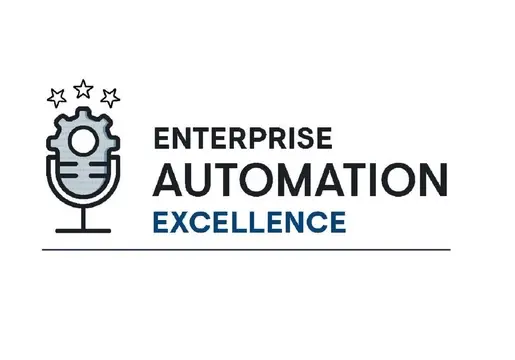Remote working might be down since the pandemic, but hybrid working is still growing strong. Research shows that employees want alignment on flexible working, with 31% of talent leaving a role which they felt didn’t provide enough flexibility.
As flexible working establishes itself as the new norm, organisations need to ensure they have a solid network to keep business communications as efficient as possible, even through remote working.
In a world defined by remote and hybrid working, cloud communication solutions are proving crucial to maintaining this network and bringing teams together, no matter where they're located.

What Are Cloud Communication Solutions?
Cloud communication solutions are web-based tools that manage a business's communication channels. This includes things like phone systems, video conferencing, messaging, and more.
Think of it as outsourcing your entire phone system, video conferencing, messaging, and more to a secure online environment. This "cloud" eliminates the need for on-premise hardware and software installations, providing your team with the flexibility they need to stay connected at all times
Employees can access their communication systems from any device with an internet connection, fostering seamless collaboration for remote teams and geographically dispersed workforces. Whether working from home, travelling the globe, or on-site, communication remains uninterrupted, ensuring business continuity and enhanced productivity.
Cloud communication solutions also eliminate the substantial costs associated with purchasing, installing, and maintaining on-premise hardware and software. Cloud-based systems require minimal IT involvement for maintenance and updates. This leads to significant financial savings for businesses and frees up valuable internal resources to focus on core business activities.
Features of Cloud Communication Solutions
Modern cloud communication platforms go beyond basic telephony, offering a wide range of features that streamline remote collaboration across your organization.
Some of the most common features include:
- Unified Communications (UC): This is the core concept behind many cloud communication solutions. UC integrates various communication channels like voice calling, video conferencing, instant messaging, and file sharing into a single platform. This allows users to seamlessly switch between communication methods depending on the situation.
- Voice over IP (VoIP): VoIP replaces traditional phone lines by making calls over the internet. This often translates to significant cost savings on phone bills, especially for long-distance calls.
- Video Conferencing: Host face-to-face meetings with colleagues, clients, or partners located anywhere in the world. This is particularly beneficial for remote teams or geographically dispersed workforces.
- Instant Messaging (IM): Enable real-time communication among team members through chat functionalities. This allows for quick updates, brainstorming sessions, and troubleshooting in a dynamic and collaborative environment.
- File Sharing: Effortlessly share documents, presentations, or other files with colleagues. Cloud storage ensures accessibility from any device with an internet connection, eliminating the need for emailing large files or relying on physical storage devices.
- CRM Integration: Connect your cloud communication system with your Customer Relationship Management (CRM) software. This allows for streamlined customer interactions by integrating call logs, voicemails, and messaging history with customer profiles. For example, a salesperson can see a customer's past communication history before placing a call.
- Call Management Features: These features can include auto-attendants for routing calls, voicemail transcription for easy message retrieval, call forwarding to ensure you never miss a call, and call recording for training or reference purposes.
Depending on the specific provider, cloud communication solutions may also offer additional features like screen sharing for remote collaboration, presence management to see if colleagues are online, and integrations with other business applications.
Benefits of Cloud Communication Platforms
Cloud communication solutions offer a multitude of benefits for businesses of all sizes, transforming the way they connect and collaborate. Here's a breakdown of some key benefits:
1. Enhanced flexibility and scalability
Unlike traditional, fixed-capacity systems, cloud communication solutions are adaptable. A growing business can effortlessly add features as needed, while smaller teams only pay for what they use. This flexibility ensures you're not locked into expensive, unused functionalities.
2. Accessibility on the go
Geographical limitations vanish with cloud communication. Employees can access their communication tools from any device with an internet connection, fostering seamless collaboration for remote or geographically dispersed teams. Imagine taking calls or joining video conferences from your laptop at the airport! This translates to improved business continuity and productivity.
3. Cost savings
Cloud communication ditches the hefty upfront costs associated with purchasing, installing, and maintaining on-premise hardware and software. No more significant investments in phone systems or server upkeep. Additionally, minimal IT involvement is required, freeing up internal resources for core business activities.
4. Collaboration boost
Modern cloud platforms go beyond basic communication, offering features that streamline teamwork. Built-in instant messaging allows for real-time interaction, file sharing facilitates effortless collaboration, and video conferencing enables face-to-face meetings, fostering stronger team dynamics and improved communication.
5. Security and reliability
Cloud providers invest heavily in reliable infrastructure to ensure your communication channels are always operational and minimize downtime. Security measures are also implemented to safeguard sensitive business data and communications. With cloud solutions, you can rest assured your communication infrastructure is in safe hands.
Best Cloud Communication Solutions
Choosing the best cloud communication solution for your business depends on your specific business needs and budget.
Still, there are a number of solutions that stand out as leaders in the market, providing your teams with everything they need to communicate and collaborate effectively from anywhere in the world.
In this list, we’re counting ten of the best cloud communication solutions available today, exploring the features and benefits that make them so popular.








Comments ( 0 )